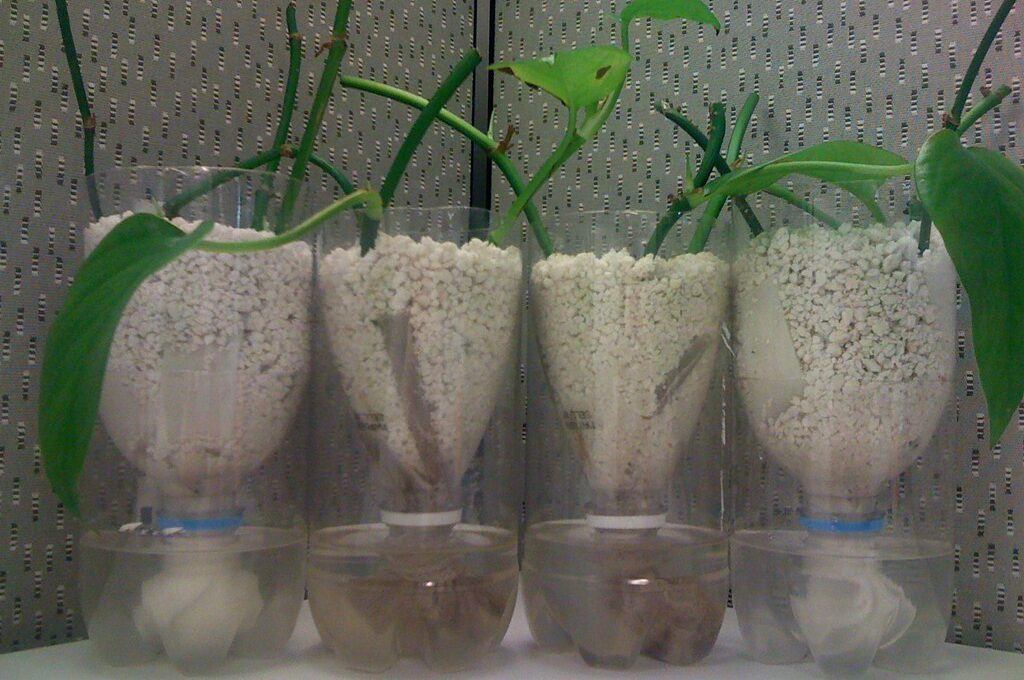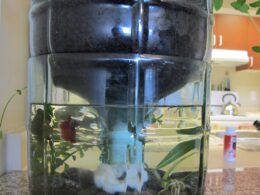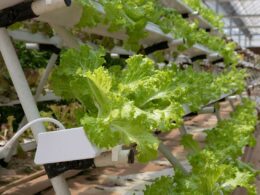If you’re new to hydroponics, you might be wondering where to start. There are several beginner hydroponic systems to choose from, each with its own advantages and disadvantages.
The good news is that these systems are easy to set up and maintain, even if you don’t have any experience with gardening. Hydroponics is a method of growing plants without soil. Instead, plants are grown in nutrient-rich water solutions that provide everything they need to grow healthy and strong.
Hydroponics is an excellent way to grow plants indoors or in small spaces, as it requires less water and space than traditional gardening methods. Additionally, hydroponic plants grow faster and produce higher yields than their soil-grown counterparts.
In this article, we’ll introduce you to some of the most popular beginner hydroponic systems, so you can choose the one that’s right for you.
Introduction to Hydroponics
You’re eager to learn about the exciting world of growing plants without soil, and this section is the perfect place to start! Hydroponics is a popular method of growing plants that involves using a nutrient-rich water solution instead of soil. The benefits of hydroponics are many, including faster growth, higher yield, and less water usage.
One of the great things about hydroponics is that you can grow a variety of plants using this method. Some popular plants for hydroponic systems include lettuce, spinach, strawberries, and herbs. These plants thrive in a hydroponic environment because they don’t require deep roots and can grow with minimal soil. Plus, hydroponic systems allow for precise control over nutrient levels, pH balance, and lighting, which means you can customize the growing conditions to suit each plant’s specific needs.
Overall, hydroponics is a beginner-friendly way to start growing plants without soil. With the right equipment and a little bit of know-how, you can create a thriving hydroponic garden that produces healthy, delicious plants. Plus, the benefits of hydroponics make it a smart choice for anyone who wants to grow plants in a sustainable and efficient way.
So, whether you’re a seasoned gardener or just starting out, hydroponics is definitely worth exploring!
Deep Water Culture (DWC) System
If you’re interested in hydroponics, you should know about the Deep Water Culture (DWC) system. This system works by suspending the plants over a pool of nutrient-rich water, so their roots are submerged.
One advantage of this system is that it’s easy to set up and maintain, but a disadvantage is that any problems with the water quality can quickly affect the entire system.
How the System Works
The Deep Water Culture (DWC) System is a beginner-friendly hydroponic system that delivers nutrients and water directly to the plant’s roots, bypassing soil altogether. The setup consists of a container filled with nutrient-rich water, an air pump, and an air stone.
The air pump pumps oxygen into the water, which the air stone diffuses into tiny bubbles. The plant’s roots absorb the oxygen and nutrients from the water, promoting healthy growth.
One of the benefits of hydroponics is that it allows for a wider range of plants to be grown, including herbs, vegetables, and fruits. Some popular hydroponic plants include lettuce, tomatoes, and strawberries.
With the DWC system, you can easily grow these plants in the comfort of your own home without worrying about soil-borne diseases or pests. Plus, the system is easy to set up and maintain, making it a great option for beginners looking to venture into hydroponics.
Advantages and Disadvantages
Now, let’s talk about the pros and cons of using hydroponic gardening as a beginner’s guide to setting up a system.
One of the biggest advantages is that you can grow plants year-round, regardless of the weather or season. Additionally, hydroponic systems use up to 90% less water than traditional soil-based gardening, making it a more sustainable and eco-friendly option. Another benefit is that you have complete control over the nutrients and pH levels of the water, allowing you to optimize plant growth and yield.
However, there are also some disadvantages to consider. One potential issue is the initial cost of setting up a hydroponic system, as it can be more expensive than traditional gardening methods. Additionally, hydroponic systems require a bit more maintenance and monitoring, as any issues with nutrient levels or pH can quickly harm your plants. Finally, there is a learning curve to understanding how to properly set up and maintain a hydroponic system, which can be a challenge for beginners.
Despite these drawbacks, however, hydroponic gardening can be a rewarding and efficient way to grow plants, especially for those who have limited space or unfavorable growing conditions.
Drip Irrigation System
Let’s take a look at the drip irrigation system, a popular choice for growing plants without soil. This system works by slowly dripping water onto the plant’s roots, allowing them to absorb the nutrients they need. The benefits of drip irrigation include water conservation, reduced weed growth, and increased plant yields. There are two types of drip irrigation systems: surface and sub-surface.
Surface drip irrigation systems are placed above the soil and distribute water through a network of tubes and emitters. This type of system is easy to install and maintain, making it a popular choice for beginners. Sub-surface drip irrigation systems, on the other hand, are installed below the soil surface and deliver water directly to the roots. This type of system is more efficient at delivering water and reduces the risk of evaporation, but it is more difficult to install and requires careful planning.
When choosing a drip irrigation system, it’s important to consider the type of plants you’re growing and the layout of your garden. A surface system may be sufficient for small gardens with a few plants, whereas a sub-surface system may be necessary for larger gardens or plants with deeper root systems. Regardless of the type of system you choose, drip irrigation is an effective and efficient way to grow plants without soil.
What Is the Cost of a Beginner Hydroponic System?
The cost of a beginner hydroponic system can vary depending on the brand and size. Generally, a basic setup can range from $50 to $200. Factors like the type of system, quality of materials, and additional accessories can influence the hydroponic system cost. It’s advisable to compare prices and consider long-term benefits before making a purchase.
Nutrient Film Technique (NFT) System
If you’re looking for a more advanced way to grow your plants without soil, you might want to check out the Nutrient Film Technique (NFT) system. This system is a hydroponic technique that involves a thin film of nutrient solution flowing over the plant roots, which are suspended in a channel.
Here are some benefits of setting up an NFT system:
- NFT systems use less water and nutrients compared to traditional soil-based gardening. This means you can save money and resources in the long run.
- The NFT system is easy to set up and maintain. You only need a few basic materials, such as a nutrient solution, a pump, and some tubing.
- Since the roots are exposed to a constant flow of oxygen and nutrients, plants in an NFT system grow faster and yield more produce than those grown in soil.
When setting up an NFT system, it’s important to make sure the channel is level and the tubing is securely attached to the pump. You’ll also need to monitor the pH and nutrient levels of the solution regularly to ensure optimal plant growth.
With proper maintenance and care, your NFT system can provide a sustainable and efficient way to grow your own fresh produce.
Aeroponic System
You can take your plant growing to the next level with an aeroponic system. This system uses a mist to deliver nutrients directly to the roots, allowing for even faster growth and higher yields. The roots are suspended in the air and sprayed with a nutrient solution, providing them with constant access to moisture and nutrients.
One of the major benefits of an aeroponic system is its efficiency. Because the roots are suspended in the air, they have access to more oxygen than in other hydroponic systems. This allows for faster growth and better nutrient absorption. Additionally, aeroponic systems use less water than other hydroponic systems, making them a more sustainable option.
However, there are also some limitations to consider. Aeroponic systems can be more expensive to set up than other hydroponic systems and require more maintenance. The misting system needs to be carefully monitored to ensure that it is delivering nutrients evenly to all of the roots. Additionally, if the misting system fails, the plants can quickly dry out and die.
| Benefits | Limitations |
|---|---|
| Faster growth and higher yields | More expensive setup |
| More oxygen to roots | Requires more maintenance |
| Less water usage | Risk of plant death if misting system fails |
Overall, an aeroponic system is a great choice for experienced hydroponic growers looking to maximize their yields. While it can be more expensive and require more maintenance than other systems, the benefits of faster growth and better nutrient absorption make it worth considering. Just be sure to carefully monitor the misting system to avoid any potential plant loss.
Frequently Asked Questions
How do I choose the right hydroponic system for my specific plant needs?
Choosing the right hydroponic system for your specific plant needs can be a daunting task, but it’s important to consider plant compatibility and nutrient solution when making your decision.
Different plants have different requirements for light, water, and nutrients, so it’s essential to choose a hydroponic system that can meet those needs. Research the specific plant you want to grow and find a hydroponic system that is designed to support its growth.
Additionally, the nutrient solution used in your hydroponic system is crucial for ensuring healthy plant growth. Make sure you choose a nutrient solution that is appropriate for your plant and the specific stage of growth it’s in.
By considering these factors, you can choose a hydroponic system that will help your plants thrive.
What are some common mistakes to avoid when setting up a hydroponic system?
Setting up a hydroponic system can be daunting, especially if you’re a beginner. But fear not, as there are common mistakes you can easily avoid with some troubleshooting tips.
One common mistake is overwatering your plants, which can lead to root rot and other issues. Make sure to monitor your plant’s water intake and adjust accordingly.
Another mistake is not properly balancing pH levels, which can affect nutrient uptake and plant growth. Invest in a pH meter and adjust accordingly to ensure optimal growth.
Lastly, be mindful of the temperature and humidity in your grow space, as extremes can harm your plants. By avoiding these common hydroponic mistakes and troubleshooting any issues, you can create a successful and thriving hydroponic system.
How often do I need to check and adjust the nutrient levels in my hydroponic system?
To ensure optimal growth and yield, it’s important to frequently check and adjust the nutrient levels in your hydroponic system. The frequency of adjustments will depend on the type of system you’re using, as well as the stage of growth your plants are in.
However, as a general rule of thumb, it’s recommended to check and adjust the nutrient levels at least once a week. Additionally, it’s crucial to maintain a proper pH balance in your system, as fluctuations can lead to nutrient lockout and hinder plant growth.
Therefore, it’s important to regularly test and adjust the pH levels to ensure your plants are receiving the proper nutrients they need to thrive. By staying on top of these adjustments, you can ensure a successful and bountiful hydroponic harvest.
Can I use tap water in my hydroponic system or do I need to use purified water?
When it comes to hydroponic systems, the tap water vs purified water debate is a common one. While tap water may seem like an easy option, it can contain contaminants and minerals that can harm your plants.
On the other hand, using purified water ensures that your plants are getting the purest form of water possible. However, it’s important to note that both options can still benefit from adding nutrient-rich water to your hydroponic system.
This can be achieved by adding a nutrient solution to your water, which will provide your plants with the necessary nutrients for optimal growth. So, while the debate continues, the most important thing is to make sure your plants are getting the best possible water and nutrients for their growth.
How do I deal with pest and disease issues in my hydroponic system?
When dealing with pest and disease issues in your hydroponic system, preventative measures are key. Keep your system clean and sterilized, use high-quality nutrients, and monitor pH and temperature levels to prevent problems. If you encounter pests or diseases, there are natural remedies like neem oil or beneficial insects like ladybugs. Act quickly and isolate infected plants to prevent further spread.
With a little diligence and focus on prevention, you can keep your hydroponic system healthy and thriving.
Conclusion
Congratulations! You now know the basics of hydroponics and the four beginner hydroponic systems.
The four beginner hydroponic systems are: Deep Water Culture (DWC) System, Drip Irrigation System, Nutrient Film Technique (NFT) System, and Aeroponic System.
Remember, each system has its pros and cons, and the right system for you depends on your space, budget, and goals. Don’t be afraid to experiment and try different systems to find the one that works best for you.
With a little bit of knowledge and patience, you can successfully grow your own plants using hydroponics. Happy growing!








